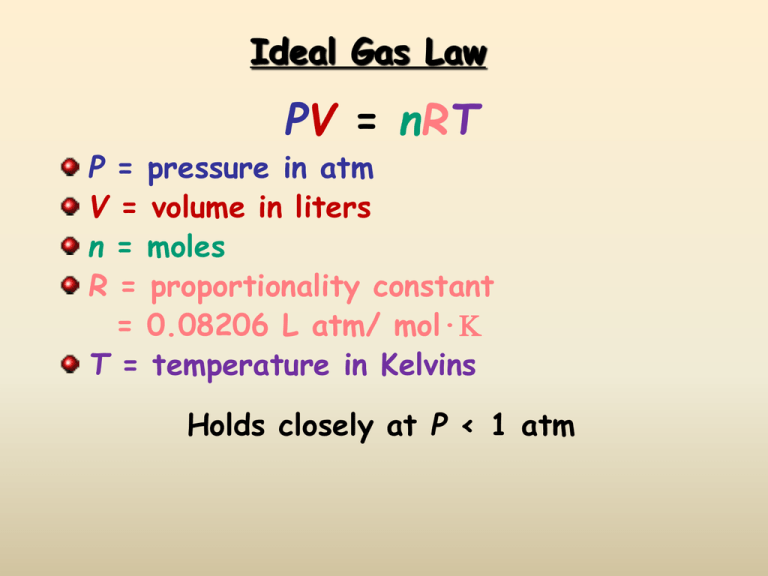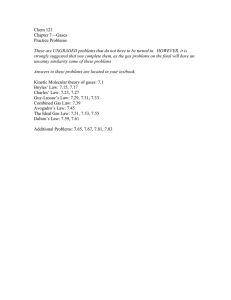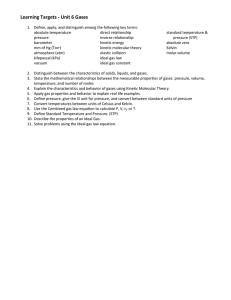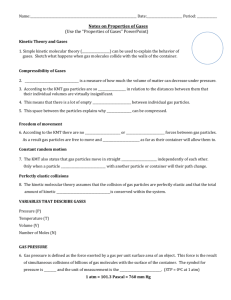P V = n
advertisement

Ideal Gas Law PV = nRT P = pressure in atm V = volume in liters n = moles R = proportionality constant = 0.08206 L atm/ mol·K T = temperature in Kelvins Holds closely at P < 1 atm Ideal Gases Ideal gases are imaginary gases that perfectly fit all of the assumptions of the kinetic molecular theory. Gases consist of tiny particles that are far apart relative to their size. Collisions between gas particles and between particles and the walls of the container are elastic collisions No kinetic energy is lost in elastic collisions Ideal Gases (continued) Gas particles are in constant, rapid motion. They therefore possess kinetic energy, the energy of motion There are no forces of attraction between gas particles The average kinetic energy of gas particles depends on temperature, not on the identity of the particle. Real Gases Do Not Behave Ideally Real gases DO experience inter-molecular attractions Real gases DO have volume Real gases DO NOT have elastic collisions Deviations from Ideal Behavior Likely to behave nearly ideally Likely not to behave ideally Gases at high temperature and low pressure Gases at low temperature and high pressure Small non-polar gas molecules Large, polar gas molecules


